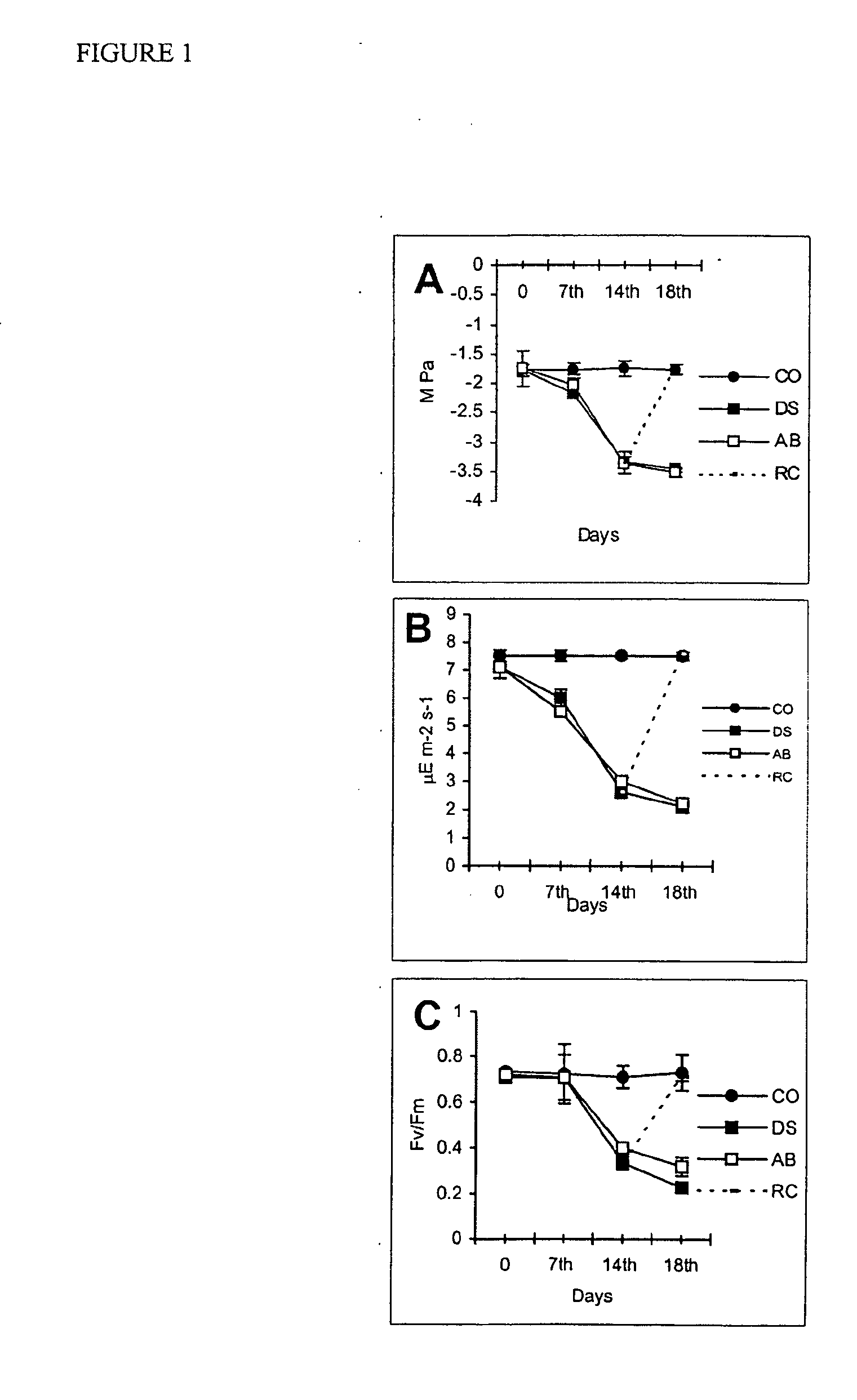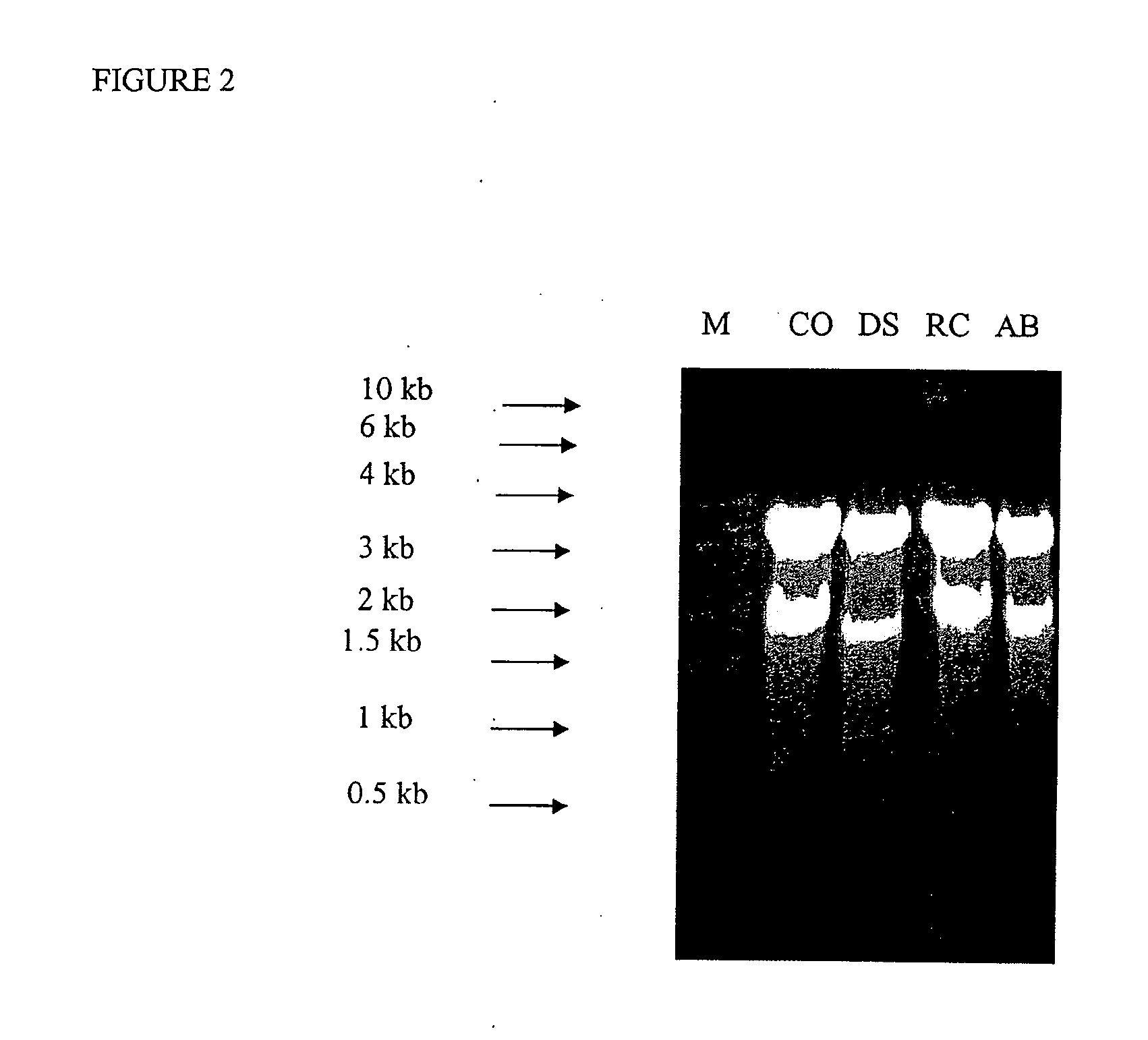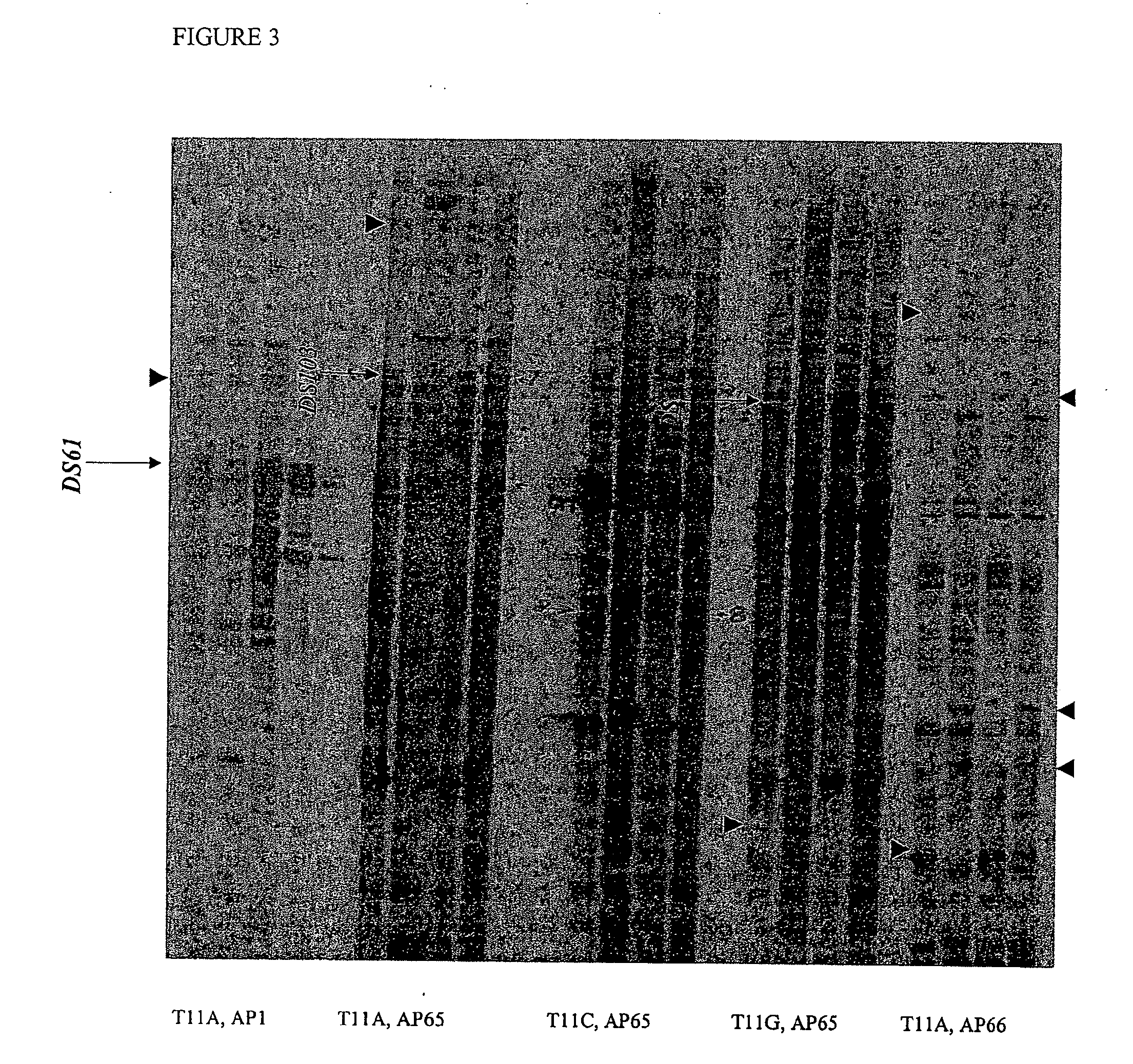Novel genes from drought stress tolerant tea plant and a method of introducing water-stress tolerance
a technology of drought stress tolerance and drought stress, applied in the field of drought stress tolerance novel genes and a method of introducing water stress tolerance, can solve the problem of very scarce information on such genes
- Summary
- Abstract
- Description
- Claims
- Application Information
AI Technical Summary
Benefits of technology
Problems solved by technology
Method used
Image
Examples
example 1
Water Potential, Photosynthesis Rate and Fv / Fm Ratio of 4th leaf of 2 Years Old Seedlings of Tea Plant Subjected to ABA (AB) treatment, Drought Stress (DS) by Withholding Water and Subsequently Rewatered on Day 14 (RC).
[0161] Water potential (hereinafter known as ψ) was measured using a psychrometer (dew point microvoltmeter; model HR 33T, Wescor, USA). Leaf disc (0.5 cm diameter) was punched using a sharp paper punch and was immediately kept in sample chamber (C-52; Wescor, USA). After 30 min of equilibration, the value was obtained in terms of cooling coefficient (units=micro-volts). The value was divided by 0.75 (proportionality constant to convert the values obtained into “bar”, the unit of ψ) to obtain the value of ψ. The complete unit of psychrometer is calibrated for 25° C. For the measurements done at temperatures other than 25° C., the following formula was used to compensate for the temperature:
[0162] Cooling coefficient at new temperature=0.7 (new temperature in degree...
example 2
RNA Isolation, Digestion of RNA with DNase 1, Quantification of RNA and Gel-Electrophoresis:
[0168] To ensure a high quality of ribonucleic acid (hereinafter known as, RNA) from CO, DS, RC and AB leaf of tea, RNeasy plant mini kits (purchased from M / s. Qiagen, Germany) were used. Manufacturer's instructions were followed to isolate RNA. RNA was quantified by measuring absorbance at 260 nm and the purity was monitored by calculating the ratio of absorbance measured at 260 and 280 nm. A value >1.8 at 260 / 280 nm was considered ideal for the purpose of present investigation. The formula used to calculate RNA concentration and yield was as follows:
Concentration of RNA (μg / ml)=A260 (absorbance at 260 nm)×40×dilution factor
Total yield (μg)=concentration×volume of stock RNA sample
[0169] To check the integrity of RNA, 5-6 μg of RNA in 4.5 μl of DEPC treated autoclaved water was diluted with 15.5 μl of M1 solution (2 μl of 5×MOPS buffer, 3.5 μl of formaldehyde, and 10 μl of formamide [5×MOPS...
example 3
Conversion of mRNA into Complementary DNAs (Hereinafter Referred to cDNAs) by Reverse Transcription (Hereinafter Referred to RT):
[0173] 0.2 μg of DNA-free-RNA from CO, DS, RC and AB samples was reverse transcribed in separate reactions to yield cDNAs using an enzyme known as reverse transcriptase. The reaction was carried out using 0.2 μM of T11M primers (M in T11M could be either T11A, T11C or T11G), 20 μM of dNTPs, RNA and RT buffer [25 mM Tris-Cl (pH, 8.3), 37.6 mM KCl, 1.5 MM MgCl2 and 5mM DTT]. In the present invention, dNTP refers to deoxy nucleoside triphosphate, which comprises of deoxyadenosine triphosphate (hereinafter referred to dATP), deoxyguanosine triphosphate (hereinafter referred to dGTP), deoxycytidine triphosphate (hereinafter referred to dCTP) and deoxythymidine triphosphate (hereinafter referred to dTTP). Three RT reactions were set per RNA sample for the corresponding T11M primer. The reactions were carried out in a thermocycler (model 480 from M / s Perkin-Elm...
PUM
| Property | Measurement | Unit |
|---|---|---|
| height×15 | aaaaa | aaaaa |
| length | aaaaa | aaaaa |
| diameter | aaaaa | aaaaa |
Abstract
Description
Claims
Application Information
 Login to View More
Login to View More - R&D
- Intellectual Property
- Life Sciences
- Materials
- Tech Scout
- Unparalleled Data Quality
- Higher Quality Content
- 60% Fewer Hallucinations
Browse by: Latest US Patents, China's latest patents, Technical Efficacy Thesaurus, Application Domain, Technology Topic, Popular Technical Reports.
© 2025 PatSnap. All rights reserved.Legal|Privacy policy|Modern Slavery Act Transparency Statement|Sitemap|About US| Contact US: help@patsnap.com



